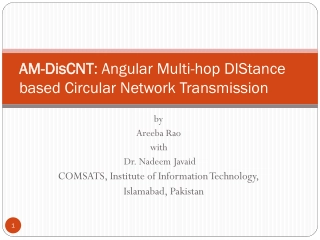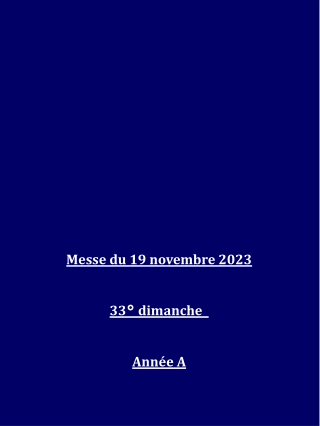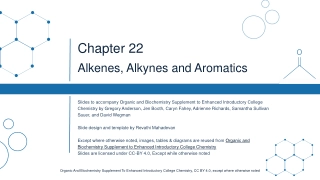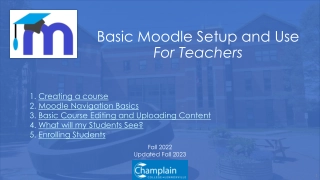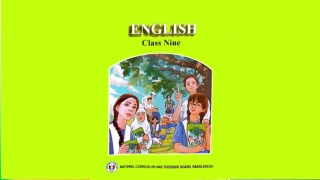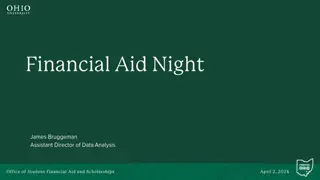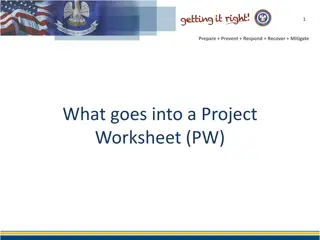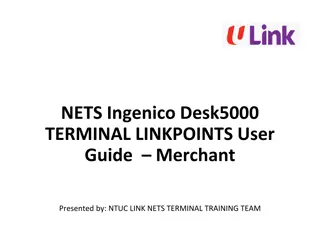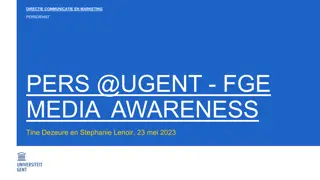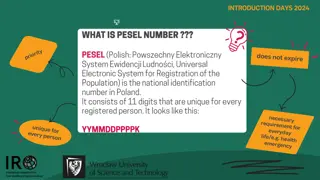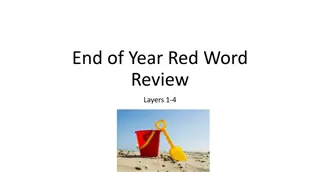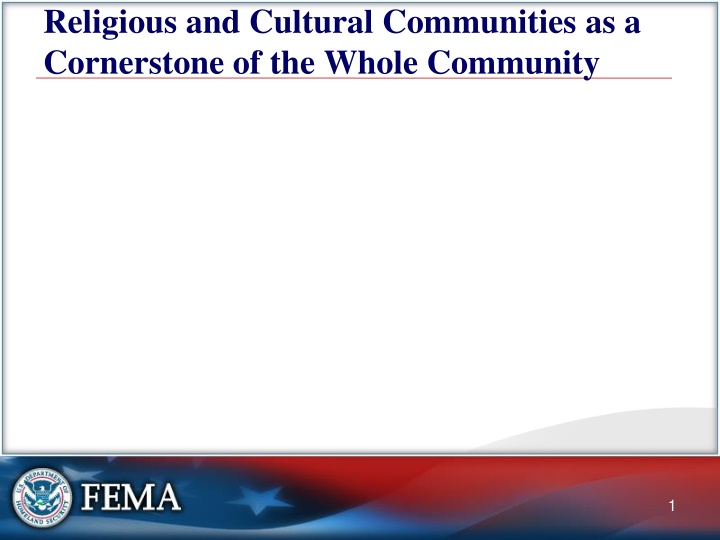
Engaging Religious and Cultural Communities in Disaster Management
Learn how to effectively engage religious and cultural communities in disaster management through a specialized course designed for emergency management professionals and community leaders. Understand the unique needs, strengths, and importance of diverse religious and cultural groups in disaster situations. Enhance your skills in communicating, empowering, and integrating these communities for comprehensive community resilience.
Download Presentation

Please find below an Image/Link to download the presentation.
The content on the website is provided AS IS for your information and personal use only. It may not be sold, licensed, or shared on other websites without obtaining consent from the author. If you encounter any issues during the download, it is possible that the publisher has removed the file from their server.
You are allowed to download the files provided on this website for personal or commercial use, subject to the condition that they are used lawfully. All files are the property of their respective owners.
The content on the website is provided AS IS for your information and personal use only. It may not be sold, licensed, or shared on other websites without obtaining consent from the author.
E N D
Presentation Transcript
Religious and Cultural Communities as a Cornerstone of the Whole Community 1
Who is this Course For? This course has been developed to provide emergency management professionals and faith and community leaders with the literacy and competency tools needed to effectively engage each other both pre- and post-disaster. 2
Course Goals The goals of this course are to provide students with: An understanding of the unique needs and strengths of diverse religious and cultural groups in disaster An understanding of how to best empower groups to support their communities in disaster Training on how to effectively integrate such groups during a disaster life cycle 3
Course Objectives Upon completion of this course, participants will be able to: Explain why we engage religious and cultural communities in disaster. Define the meaning of religious and cultural literacy and competency in disaster management. Effectively communicate with stakeholder religious and cultural leaders and groups in the field. Develop an engagement plan. 4
Course Overview Throughout this course, we will be discussing the following broad topic areas: Whole Community Religious and Cultural Landscape Understand the Situation and Leveraging Partnerships Learn Your Religious and Cultural Landscape Assess Your Knowledge Develop an Engagement Plan Maintain and Sustain Leader and Community Engagement Continuously Review and Improve Your Engagement Plan 5
Introductions Please take a moment to introduce yourselves to the group. In your introduction, please include: Name Job Title Your goal for attending this course 6
Lesson Overview Upon completion of this lesson, you should be able to: Describe how religious and cultural communities are a vital part of whole communities and why community engagement is essential in disaster response. Identify and explain the assets faith and cultural communities bring to the whole community. Recognize the diversity of the U.S. religious and cultural landscape. Successfully engage religious and cultural communities by using appropriate vocabulary. 7
FEMA Mission FEMAs mission is to support our citizens and first responders to ensure that as a nation we work together to build, sustain and improve our capability to prepare for, protect against, respond to, recover from and mitigate all hazards. 8
Whole Community Federal Government is only one part of the overall society Every part must be prepared to deal with disasters Whole community approach ensures every part of the society is included 9
Faith Communities as Part of the Whole Community Whole community includes religious and cultural groups Definition of "groups" Emergency management personnel must be aware of the different groups they may encounter This awareness will help increase resilience 10
Faith Communities as Part of the Whole Community (cont'd) This course does not: Endorse any particular religious belief or practice Suggest that faith communities be prioritized over secular communities This course is intended to increase the field of skills of emergency management personnel when engaging with religious and cultural communities Religious and culture are tightly interconnected 11
Class Discussion - Whole Community Have you found yourself in a situation where you had wanted to have more information or knowledge about a particular religious/cultural group? How do you think it may have helped? 12
Preparing for Disaster Collaboration: Government must collaborate with community leaders from all sectors. Integration: Nongovernmental assets and resources must be fully integrated into government plans, preparations, and disaster response. 13
Discussion - Assets of Faith Communities When you think about faith communities, what assets do you think they are able to contribute during a disaster? 14
Assets of Faith Communities in Disaster Mission to Serve Trusted Messenger Resources Knowledge Networks Programs Presence and Staying Power 15
Role of Religion 77% of Americans are affiliated with a religious tradition (Pew Forum on Religion & Public Life U.S. Religious Landscape Survey (2014), http://religions.pewforum.org/reports). 38% of Americans would expect to rely on the faith-based community for assistance in the first 72 hours after a disaster, while only 34% would expect to rely on state and federal government agencies, including FEMA (Preparedness in America,) https://www.fema.gov/media-library- data/1409000888026- 1e8abc820153a6c8cde24ce42c16e857/20140825_Prepa redness%20in%20America_August%202014%20Update _508.pdf) FEMA, August 2014). 16
Religious Diversity in the US 71% of Americans identify as Christian But there are nearly 200 denominations and religious traditions in the US Social, cultural, ethnic, and linguistic diversity to both urban and rural settings 17
Faith Communities 1.Religious Congregations 2.Denominations and Judicatories 3.Federations, Networks, Conferences, and Associations 4.Schools, Colleges, and Theological Institutions 5.Social Service Organizations 6.Hospitals and Clinics 7.Burial Societies and Cemeteries 8.Disaster Human Services Organizations 9.Clubs and Youth Groups 18
Faith Communities (continued) When interacting with those in various faith communities, it is important to ensure clear communication. This includes: Understanding the terminology used Using inclusive terms Not offending 20
Inclusive Terms Inclusive Term Religious Leaders House of Worship Congregation Faith Communities Non-inclusive Term Clergy Church House of Worship Faith Community 21
Additional Terms FBO, NGO, and CBO Faith-based Social Services Ecumenical Inter-religious Interfaith Multi-faith 22
Use of Acronyms Language used by FEMA and other EM organizations may be significantly different than the language used in the affected faith communities FEMA Acronyms, Abbreviations, and Terms (FAAT) list has 6200 acronyms and is 70 pages long ( https://www.fema.gov/pdf/plan/prepare/faatlist07 _09.pdf ) Using acronyms when engaging faith communities will likely create a barrier to understanding Use plain language to ensure clear communications (http://www.plainlanguage.gov/) 23
Use of Acronyms (cont'd) Acronym Religious Community FAAT CWS Church World Service Compressed Work Schedule PDA Presbyterian Disaster Assistance Preliminary Damage Assessment TSA The Salvation Army Transportation Security Administration 24
Discussion - Literacy and Competency Have you encountered a situation when the use of certain terms or acronyms caused confusion (either in a personal or professional capacity)? What happened? How did you resolve the misunderstanding? 25
Lesson Summary You should now be able to: Describe how religious and cultural communities are a vital part of whole communities and why community engagement is essential in disaster response. Identify and explain the assets faith and cultural communities bring to the whole community. Recognize the diversity of the U.S. religious and cultural landscape. Successfully engage religious and cultural communities by using appropriate vocabulary. 26

